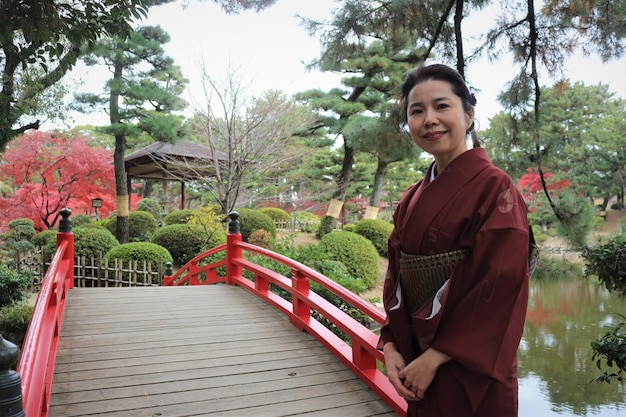Decoding Japanese Nonverbal Communication: A 2025 US Traveler’s Guide

Decoding Japanese nonverbal communication is crucial for US travelers in 2025, ensuring respectful and effective interactions by understanding subtle cues like bowing, eye contact, and gestures, which differ significantly from Western norms.
Planning a trip to Japan in 2025? Beyond learning basic Japanese phrases, understanding decoding Japanese nonverbal communication is essential for a smooth and respectful travel experience. This guide will help US travelers navigate the nuances of Japanese body language, customs, and etiquette.
Understanding the Importance of Nonverbal Communication in Japan
Japan is renowned for its rich culture, deep traditions, and intricate social customs. While verbal communication is important, nonverbal cues often carry a greater weight, especially in formal or unfamiliar settings. US travelers need to be aware of these subtle signals to avoid misunderstandings and show respect.
Why It Matters for US Tourists
American tourists sometimes struggle with Japanese nonverbal communication because they often rely on direct verbal expression. Being mindful of nonverbal cues can significantly enhance interactions and foster positive relationships. This understanding can prevent unintentional offenses and promote a more immersive and respectful cultural exchange.
The Role of Context
Context plays a crucial role in interpreting nonverbal signals. What may be acceptable in one situation may be inappropriate in another. For instance, formality at a traditional tea ceremony will demand different behaviors compared to a casual interaction in a local market. Paying attention to the environment and observing local behavior will greatly help in understanding the correct interpretation of gestures.

- Bowing: Different types of bows signify varying levels of respect and formality.
- Eye Contact: Prolonged eye contact can be seen as confrontational, especially with superiors.
- Silence: Often used to show respect or contemplation, not necessarily disagreement.
Therefore, appreciating and understanding the intricacies of Japanese nonverbal communication can lead to more authentic and meaningful experiences for US travelers. It demonstrates cultural sensitivity and opens doors to deeper connections with locals.
Key Elements of Japanese Nonverbal Communication
Delving into Japanese nonverbal communication reveals several key elements that are crucial for foreigners to grasp. These elements range from body language to facial expressions and cultural behaviors, each carrying significance and impacting social interactions.
Bowing (Oojigi)
Bowing, or “ojigi,” is a fundamental aspect of Japanese communication. It isn’t just a simple nod; it’s a complex system that reflects the relationship between individuals. The depth and duration of the bow indicate the level of respect or apology being conveyed. Shallow bows are casual greetings, while deeper bows express deep gratitude or remorse. Understanding the nuance of various bows is central to navigating social situations gracefully.
Facial Expressions and Emotions
Japanese culture often values emotional restraint, which is reflected in facial expressions. Direct, overt displays of emotion can be seen as disruptive or impolite. Instead, emotions are often expressed subtly. A smile doesn’t always equate to happiness, as it can mask embarrassment or discomfort. Likewise, maintaining a composed expression in stressful situations is regarded as a virtue.
Gestures and Body Language
Gestures and body language in Japan differ significantly from Western norms. Waving your hand towards your face, for example, is a gesture for “no.” Similarly, using your index finger to point directly at someone is considered rude. The way you sit, stand, and even hold your chopsticks all convey messages, underscoring the significance of being mindful and observant of your body language. Posture and demeanor are always under evaluation.
To conclude, recognizing these key elements allows US travelers to handle interactions in Japan with grace, politeness, and an enhanced level of cultural understanding. By mastering these nonverbal cues, tourists can forge more genuine connections with the local population.
Common Misunderstandings and How to Avoid Them
Cultural differences can lead to common misunderstandings in nonverbal communication between US travelers and Japanese locals. Knowing what these potential pitfalls are and how to avoid them can greatly enhance the travel experience.
Physical Contact
Physical contact is generally less common in Japan compared to the United States. Hugs, back-pats, and prolonged handshakes can make some Japanese individuals uncomfortable. Maintaining a respectful distance is often appreciated. Unless invited, avoid unnecessary physical touch. The Japanese tend to value personal space significantly more than Western cultures.
Direct Eye Contact
While maintaining eye contact is generally seen as a sign of attentiveness and honesty in the US, prolonged eye contact can be perceived as aggressive or disrespectful in Japan, especially when interacting with superiors or elders. It’s better to soften your gaze or look down occasionally to show respect. This subtle shift can prevent unintended discomfort and promote smoother communication.
Loudness and Tone of Voice
Speaking loudly is generally discouraged in Japanese culture, especially in public places. Maintaining a moderate tone of voice is key, as loudness can be interpreted as aggressive or impolite. Additionally, be mindful of your tone, as it can convey unintended messages. A calm and respectful tone is always appreciated and fosters goodwill.

- Avoid assumptions: Don’t assume that gestures mean the same thing in both cultures.
- Be observant: Watch how locals interact with each other and emulate their behavior.
- Ask for clarification: If unsure, politely ask a trusted source for clarification.
Knowing these frequent misunderstandings enables US tourists to navigate social conditions in Japan with more self-assurance and cultural sensitivity. By keeping these points in mind, tourists can anticipate and prevent situations that might be misinterpreted, which facilitates a more positive and enriching travel experience.
Practical Tips for US Travelers in 2025
For US travelers planning a trip to Japan in 2025, there are many actionable steps they can take to better understand and navigate Nonverbal Communication. Incorporating these tips into preparations before departure can significantly enhance their travel experience.
Researching Common Gestures
Before traveling, take time to investigate average Japanese gestures and their meanings. Numerous books, articles, and online resources detail culturally sensitive nonverbal cues. Understanding the nuances of behaviors like bowing, hand motions, and facial expressions can prevent misinterpretations and cultural missteps.
Observing Locals
One of the most effective ways to learn is by observing locals in various contexts. Watch how Japanese people interact with each other at train stations, restaurants, and public events. Paying close attention to their body language, facial expressions, and overall demeanor can offer valuable insights into cultural norms. Emulating these behaviors in your interactions demonstrates respect.
Learning Basic Japanese Phrases
While nonverbal communication is crucial, learning basic Japanese phrases can further enhance interactions with locals. Knowing how to say simple greetings, thank you, and excuse me can build rapport and demonstrate respect for the local language and culture. Combining verbal and nonverbal communication effectively creates a more harmonious interaction.
Equipping themselves with practical strategies ensures that US travelers are ready to navigate Japan’s cultural landscape smoothly. By prioritizing education, observation, and adaptability, travelers can foster constructive interactions and create enduring memories.
The Impact of Technology on Nonverbal Communication
In 2025, technology will continue to impact every aspect of life, including nonverbal contact. While traditional cues remain essential, digital communication introduces new layers of complexity and opportunity for misunderstanding.
Digital Interactions
Digital interactions such as video calls and messaging apps are increasingly common, even within Japan. Understanding how nonverbal cues translate in these digital spaces is vital. For instance, maintaining digital eye contact during video calls can show engagement, while emoji use should be carefully considered to avoid cultural faux pas.
AI and Translation Tools
AI-powered translation tools are becoming more sophisticated, but they are not foolproof. While these tools can assist with verbal communication, they often fail to capture the nuances of nonverbal cues. Relying solely on technology can lead to misinterpretations. It’s essential to combine technological assistance with human understanding.
Social Media and Cultural Exchange
Social media platforms offer opportunities for cultural exchange and learning. However, it’s important to be mindful of cultural differences when posting or engaging online. What may be appropriate in one culture can be offensive in another. Consider the potential impact of your digital footprint when communicating with Japanese individuals online.
Adjusting to the impact of technology on nonverbal communication enables US tourists to engage successfully in both face-to-face and digital contexts. By understanding these improvements and challenges, tourists can enrich their travel experience while respecting cultural norms.
Preparing for Your Trip: A Checklist
Preparing for a trip to Japan in 2025 requires careful planning to provide a smooth and respectful cultural experience. Having a detailed checklist can assist US travelers in covering all essential bases before departure.
Cultural Sensitivity Resources
Identify and gather resources that provide insights into Japanese culture and Nonverbal Communication. These might include travel guides, cultural sensitivity training programs, and language learning apps. Use these resources to educate yourself on Japanese etiquette, customs, and values.
Packing Essentials
Pack items that reflect respect for Japanese culture. Comfortable walking shoes are essential, as many attractions involve walking. Modest clothing is generally appreciated, especially when visiting religious sites. Consider bringing small gifts to express gratitude when receiving hospitality.
Travel Insurance and Health
Ensure you have comprehensive travel insurance that covers health emergencies and unforeseen circumstances. Research healthcare facilities in the areas you plan to visit and understand how to access medical care if needed. Carry any necessary medications with prescriptions in case you need refills.
With careful planning and preparation, US tourists can embark on their trip to Japan confidently, knowing they have taken the required steps to ensure a respectful and unforgettable experience. This thoroughness fosters beneficial interactions and deeper cultural knowledge.
| Key Point | Brief Description |
|---|---|
| 🇯🇵 Bowing Etiquette | Different bows represent varying levels of respect; learn the nuances. |
| 😶 Facial Expressions | Subtle displays of emotions are valued; avoid overt expressions. |
| 👉 Gesture Sensitivity | Some US gestures may be rude in Japan; be mindful of body language. |
| 📱 Digital Etiquette | Maintain appropriate decorum online as cultural norms apply to digital interactions. |
Frequently Asked Questions
▼
Nonverbal cues often carry more weight than verbal communication in Japan, emphasizing respect and harmony. Mastering these cues can prevent misunderstandings and foster better relationships with locals.
▼
Bowing (ojigi) is a complex system. The depth and duration of the bow signify different levels of respect or apology. Shallow bows are casual, while deeper bows indicate gratitude or remorse.
▼
Avoid unnecessary physical touch, such as hugs or back-pats, unless invited. The Japanese tend to value personal space and physical contact is less common compared to the US.
▼
Prolonged eye contact can be seen as aggressive or disrespectful, especially with superiors or elders. Soften your gaze or look down occasionally to show respect and prevent discomfort.
▼
Use AI translation tools carefully, recognizing they may not capture nonverbal nuances. Be mindful of cultural differences in digital communication and consider the impact of social media posts.
Conclusion
Understanding Japanese nonverbal communication is vital for US travelers in 2025, ensuring respectful and rewarding interactions. By familiarizing themselves with key elements, avoiding common misunderstandings, and embracing technology thoughtfully, tourists can confidently navigate the cultural landscape and foster genuine connections with their Japanese hosts.





